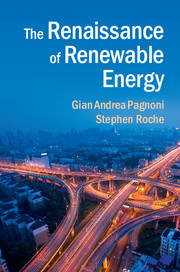2 - Where Does Energy Come From?
Published online by Cambridge University Press: 05 March 2015
Summary
Energy Commodities
Every form of energy that we currently use comes from the sun. The sun emits the light and heat that powers solar panels and water heaters, causes the air movements that drive wind turbines, replenishes the rivers that feed hydroelectric reservoirs and stimulates biofuel crops to grow, as it did the plants and algae whose fossilised remains form the coal, oil and gas in the Earth’s crust. The sole exception to this rule is uranium, which did not so much come from as with the sun, having been present in the primordial nebula that gave rise to our solar system.
When we talk about energy sources, we are not describing their scientific origin as much as the form the different energy carriers take. That is why coal, wind and light are regarded as different energy sources. But because energy is big business, we also talk about energy commodities, meaning the different ‘products’ on the energy market (IEA 2005). Energy commodities can be divided into three main categories: heat, electricity and fuels.
While it is possible to obtain heat directly from the Earth and the sun, most of the heat we use in homes, offi ces and factories was obtained indirectly, usually by burning fuel. Sometimes, at a domestic scale, heat is generated using electricity ; for example, in electric boilers or heat pumps. This method is, of course, highly ineffi cient as it represents a threefold energy conversion; fuel to heat, heat to electricity and electricity back to heat.
- Type
- Chapter
- Information
- The Renaissance of Renewable Energy , pp. 26 - 44Publisher: Cambridge University PressPrint publication year: 2015



